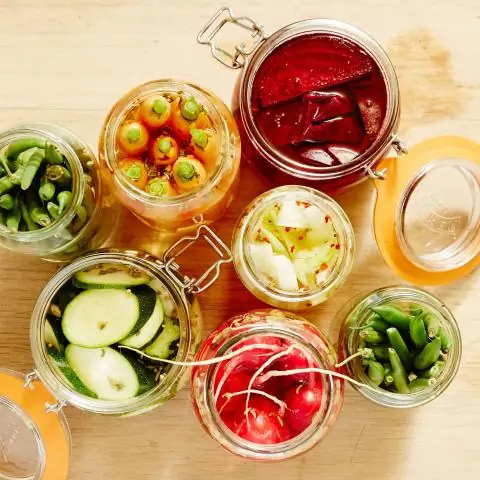
Table of contents:
- Author Bailey Albertson [email protected].
- Public 2023-12-17 12:53.
- Last modified 2025-01-23 12:41.
Choosing ripe fruits with health benefits: avocado, mango, pineapple

In the middle of winter, I really want to please myself and loved ones with tropical fruits and vitamin cocktails. But unripe or overripe fruits only spoil the mood - there are no health benefits from them. Fortunately, each fruit has external signs that can be used to determine its ripeness without even cutting it to pulp.
How to find a ripe avocado
The main sign of a ripe fruit is the color of the skin. It should not be saturated green, but dark, closer to brown. Green-skinned avocados are unripe specimens with tough flesh.

Even if you accidentally bought an unripe fruit - don't worry, avocados ripen quite successfully at room temperature.
Next, it is worth checking the fruit for elasticity so as not to buy an overripe avocado. Squeeze it firmly with your fingers. Ripe avocado will almost instantly regain its shape, getting rid of dents. If you removed your fingers, and the dents are still visible, then you should not take the fruit.
An unusual way to determine the ripeness of an avocado is by ear. Try shaking it over your ear. In an unripe fruit, the bone fits tightly to the pulp and does not move, so there will be silence. And with a ripe fruit, it will knock very noticeably.
To make sure that the fruit is not overripe, remove its stalk (in stores they do not scold for this, I checked). There should be a light circle under the ponytail that stands out clearly from the rest of the peel. If it is dark, then the avocado is overripe. Put it back on the shelf.

A real indicator of ripeness is hidden under the handle
Avocado grows in many countries: Israel, USA, South Africa, Latin America. That is why you can find ripe fruit in stores all year round.
Choosing a sweet mango
Mangoes are usually chosen not in shape (it differs from variety to variety) and not in color (it just speaks about the amount of sunlight that fell on the fruit). It is best to determine the ripeness of this fruit by touch. Sweet mango is heavy, firm but not tough, slightly elastic. When probing the fruit, pay attention to the absence of dents and voids under the skin. If the peel itself is wrinkled, then such a mango urgently needs to be put aside - it is overripe, and the taste will be C grade at best.
The mango peel has its own aroma and perfectly conveys the condition of the fruit. If the smell is rich, pleasant, sweetish, but not cloying - the fruit is in the juice itself, you must take it. If there is practically no aroma, then the pulp will not be able to boast of a pronounced taste. But the sugary smell with alcoholic notes is a sure sign that the mango has fermented.

Dark spots on the fruit do not indicate its poor quality - do not be afraid to take such specimens
In Thailand, mango ripens in April-May. At the same time, you can search for ripe fruits in Russian supermarkets.
How to find a good pineapple
An unripe pineapple is not only money blown in the wind and a lack of useful vitamins, but also a powerful laxative. To avoid such a dangerous trap, focus on its "foliage". Individual leaves should be easily pulled out, but not fall out on their own at the slightest touch.
Like mango, ripe pineapple can be identified by its smell. The sweet characteristic aroma indicates the ripeness of the fruit. Its absence is about immaturity. And alcoholic or vinegar notes are about overripe.
Ripe pineapple should feel firm but not soft to the touch. If you squeeze it in your hand, you can feel that you are able to squeeze it slightly, but there should be no external signs (for example, dents) after your impact.

You should not be guided by color - some varieties are considered ripe in green, while others with the same look are not even close to ripe
Pineapples ripen all year round, and therefore ripe fruit can be found in stores any month.
Ripe fruits are a great source of vitamins and vitality. Knowing how to tell a ripe fruit from an unripe one will help you to provide yourself with juicy tropical dishes at no extra cost.
Recommended:
Apricot Pineapple: Description And Characteristics Of The Variety, Advantages And Disadvantages, Planting And Care Features + Photos And Reviews

Apricot Pineapple - description, advantages and disadvantages, planting and care, diseases and pests
How To Choose A Nitrate-free Watermelon (ripe, Sweet And Tasty) + Video

Features of choosing a ripe watermelon grown without the use of nitrates. Signs of immaturity and the content of harmful substances
How To Choose Pineapple - Good, Ripe And Delicious - In A Store Or Market + Video

How to choose the most ripe, healthy and tasty fruit. We pay attention to the external characteristics: color, smell, size, shape, etc
How To Choose A Persimmon That Does Not Knit Correctly: Ripe, Sweet, Tasty, Dried, King Or Sharon + Photo And Video

How to choose the right delicious persimmon, what you should pay attention to, and how to store its fruits at home
How To Choose The Right Ripe Pomegranates, Lychee And Pomelo When Buying Fruit In The Store

How to choose ripe fruits: pomegranate, lychee, pomelo. What to look for in the store. When is the season for these fruits
